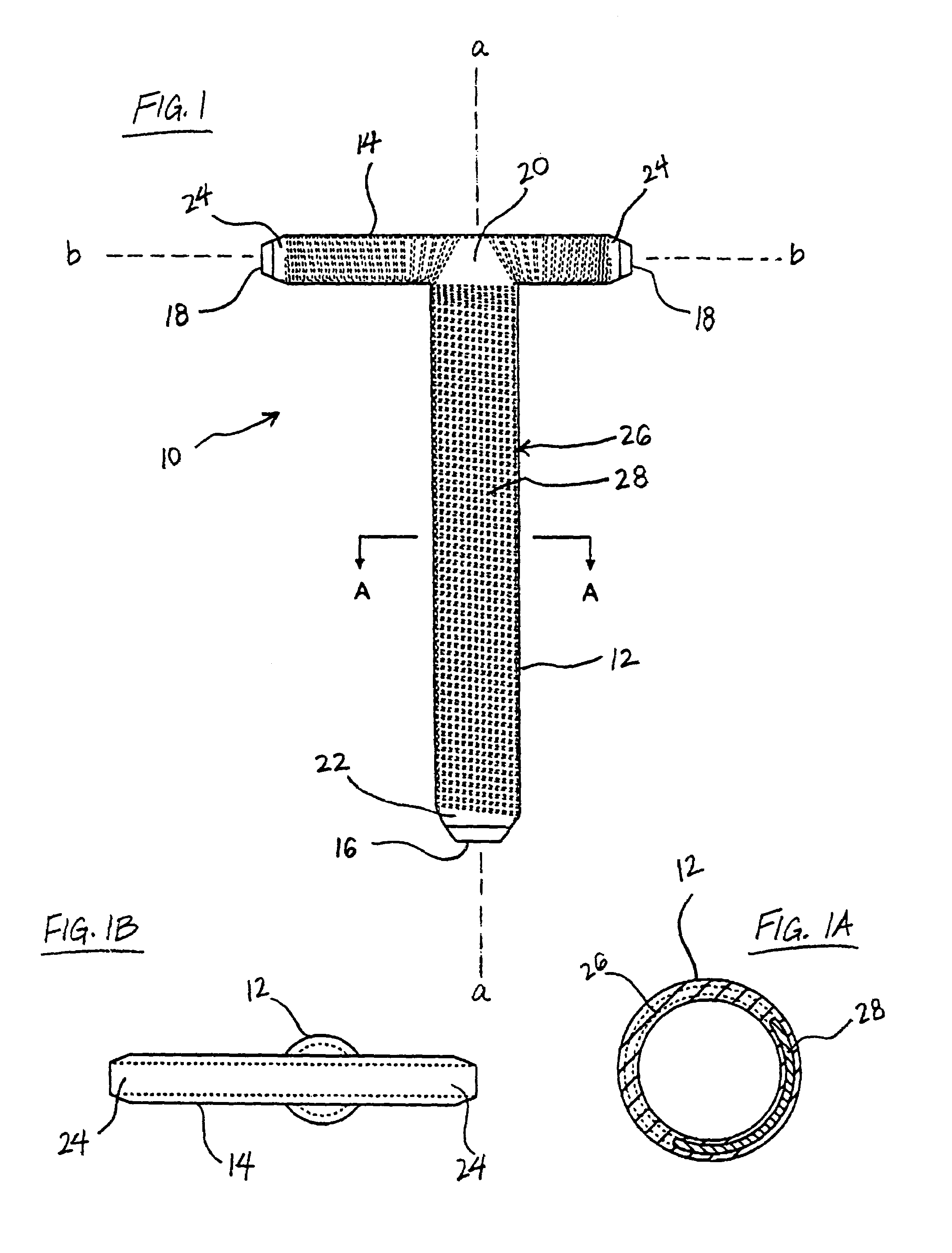Manufacturing conduits for use in placing a target vessel in fluid communication with a source of blood
a technology for a target vessel and a fluid communication, which is applied in the direction of manufacturing tools, buttons, food shaping, etc., can solve the problems that heart disease remains the leading cause of death, and achieve the effect of sufficient rigidity and sufficient resilien
- Summary
- Abstract
- Description
- Claims
- Application Information
AI Technical Summary
Benefits of technology
Problems solved by technology
Method used
Image
Examples
example 1
[0110]A first mold including two mold halves was machined from aluminum and had a configuration substantially the same as that shown in FIG. 6. The mold halves were connected via dowel pins and grooves were milled into the faces of the mold halves. The grooves defined a cavity with first and second portions disposed transverse to each other to form a conduit having the same configuration. The first and second cavity portions were sized to receive a steel mandrel, and the cavities and the mandrel substantially corresponded to those shown in FIG. 6
[0111]A light coating of spray-on mold release was applied to the mandrel, and the mandrel was placed in the mold halves which were then assembled. Silicone was used as the moldable material. Air was removed from the silicone by vacuum and ultrasonic agitation prior to injecting the silicone into the mold cavity. Next, approximately one cc of NuSil Med-4950 silicone was poured into the inlet of the mold to form the conduit preform (as this c...
example 2
[0115]Two tubular lengths of expanded PTFE (ePTFE) having a wall thickness of 0.008 inch and an internodal distance of 30 microns were formed substantially as the two conduit portions shown in FIG. 18. Mandrels were coated with a release agent and were used to support the two pieces of ePTFE while they were joined. Silicone was placed between the two portions at the junction and the silicone was cured in an oven at 150° for 2 hours to bond the two portions; the silicone, NuSil Med-6640 wicked between the nodes of the ePTFE and when cured bonded the pieces together to produce a conduit preform having two portions with lumens in fluid communication.
[0116]A reinforcing component was applied by wrapping a nitinol wire around the first and second conduit portions. The exterior surface of the conduit preform was coated with NuSil Med-4850 (LSR) silicone and the reinforcing wire was wrapped around the preform, embedding itself in the silicone. The silicone was then cured again in an oven a...
PUM
| Property | Measurement | Unit |
|---|---|---|
| angle | aaaaa | aaaaa |
| wall thickness | aaaaa | aaaaa |
| wall thickness | aaaaa | aaaaa |
Abstract
Description
Claims
Application Information
 Login to View More
Login to View More - R&D
- Intellectual Property
- Life Sciences
- Materials
- Tech Scout
- Unparalleled Data Quality
- Higher Quality Content
- 60% Fewer Hallucinations
Browse by: Latest US Patents, China's latest patents, Technical Efficacy Thesaurus, Application Domain, Technology Topic, Popular Technical Reports.
© 2025 PatSnap. All rights reserved.Legal|Privacy policy|Modern Slavery Act Transparency Statement|Sitemap|About US| Contact US: help@patsnap.com



